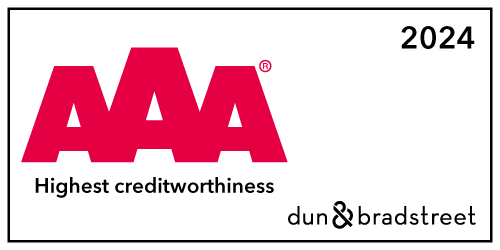The České Budějovice City Transport Company decided to comprehensively modernize the information technology and communications of the on-board vehicle systems and the traffic dispatching centre. The extensive project for the development of telematics elements and attractiveness of public transport services included a control system, information system, check-in and communication system. The modernisation of the communication system included the supply of a digital radio network with TETRA technology, including the supply of terminals for vehicles and a dispatching system. The contract was implemented by AŽD. Within the project, our company DCom provided the supply and installation of the entire communication infrastructure of the TETRA radio network, base stations and terminals for vehicles, the supply of a voice dispatching system, call recording and network management system.

Public transport in České Budějovice
The public transport started its regular operation in 1909. Currently, the České Budějovice City Transport Company operates 8 trolleybus and 16 bus lines, which serve approximately 110 vehicles on weekdays. In addition to the city itself, public transport vehicles travel to 15 surrounding villages, serving a total area of nearly 120,000 inhabitants.

Radio network TETRA of the Transport Company of the City of České Budějovice.
The transport company has set a number of requirements for the new radio network. The advantage of a private radio network with TETRA technology is its independence from external telecommunications service providers. The radio network was designed for high availability and reliability. Key elements of the communication infrastructure are backed up. The radio network uses 4 base stations that cover the area served in the city as well as surrounding municipalities served by public transport. The TETRA network technology uses Hytera DIB-R5 outdoor base stations. Base stations in the city are equipped with two base stations due to the transmission capacity. This simultaneously provides backup and increases the reliability of these key elements. All calls and transmitted data in the radio network are encrypted. The access of the radio station to the radio network is verified by authentication.

Radio network functions
The radio network covers all types of voice communication (individual, group, emergency calls, etc.) The basic principle for communication between vehicles and dispatcher is that the dispatcher decides whether to initiate voice communication. If the driver of the vehicle wants to talk to the dispatcher, he sends a call request to the dispatcher and the dispatcher decides to establish a voice connection according to the immediate situation.

TETRA radios in vehicles
The on-board computer integrates the control of a number of technologies used in public transport vehicles, including communication and radio. The TETRA on-board radios in public transport vehicles are controlled via a standard PEI interface via an on-board computer supplied by bustec. For this reason, Sepura SRG3900 radios without control panel are used.

For technology vehicles, the same type of radio station with a control panel in the microphone is used. This option facilitates the placement of the radio in modern vehicles where it is difficult to install additional instruments in the dashboard.

Dispatching workplace
The dispatcher uses TransData’s TransFleet dispatching control system for traffic management, which enables real-time monitoring and control of traffic. The dispatching system displays the position of individual vehicles on a map and automatically evaluates deviations from the timetable. This system complements the voice client developed by our company DCom. The voice client is connected directly to the TETRA radio network infrastructure. The dispatching system controls the voice client and gives instructions to set up the call. The dispatcher workstation is equipped with a table microphone with integrated PTT button. All communication is recorded using a ReDat recording device.

Telemetry data transmission
In addition to providing voice communication between drivers and dispatchers, public transport vehicles send a large amount of telemetry data to the control room via the TETRA radio network. Vehicles send information about position (about every 10 s), arrival and departure from the stop, passing through a checkpoint, error messages, short status messages, etc. at regular intervals. Vehicles can automatically receive preferences at selected traffic lights via radio network communication. For example, remote triggering of preset voice and text messages for the vehicle information system is transmitted from the dispatch system to the vehicles. At peak times, the radio network transmits approximately 30,000 messages per hour. Data channels are allocated for data transmission at the base stations.




